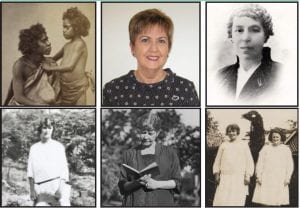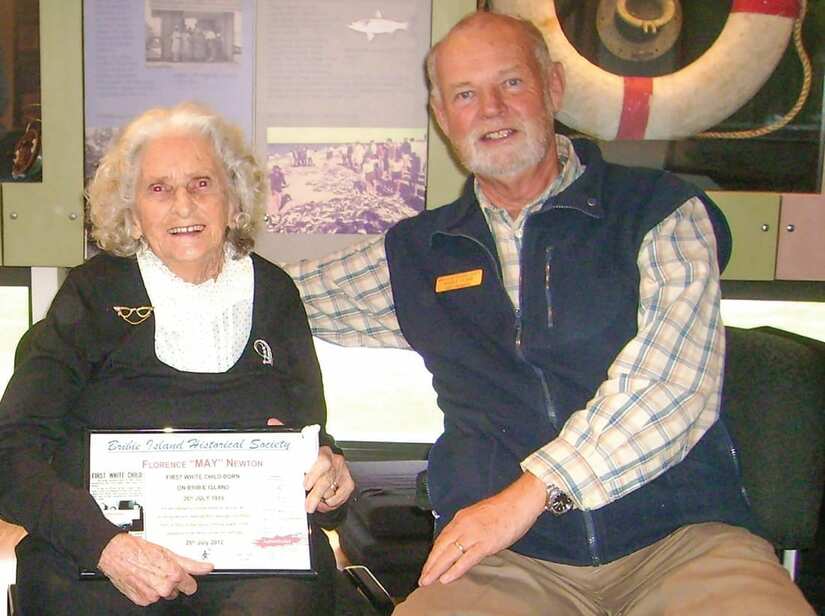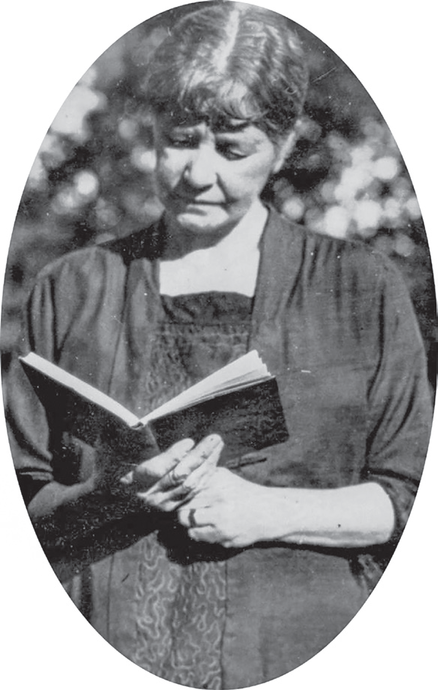Tags: Bribie Island history. History Queensland. Historical women. Bribie Island Historical Society
SOME REMARKABLE WOMEN OF BRIBIE ISLAND
Featured image: Florence “May” Newton the first white child born on Bribie
WOMEN of BRIBIE ISLAND 1820s – 1940s
Presentation by
Bribie Island Historical Society President LYNNE HOOPER
Friday, 27th April 2018 at 1 pm
Phone 3408 1450 to register at the U3A Centre
Recreation Hall, First Avenue, Bribie Island
As I sit down to write this month’s History Page we have just celebrated International Women’s Day, so I thought it appropriate to tell Bribie Island readers about some remarkable pioneer Women who developed this community in the early years.
Most local history documents record the efforts of pioneer men who Explored and Discovered, built the first roads and infrastructure, operated Shipping or Construction businesses.
During the pioneer years of Queensland, and for the earliest residents of Bribie Island in the 1890’s, it was indeed a tough hard life. However, amongst these hard tough men scratching a living as best they could, there were some equally remarkable women. Given the very small resident population of Bribie Island in the early days it seems there were a significant number of women who made exceptional contributions to the development of Bribie Island.
This article mentions a few of these outstanding women (who just happen to have the same name, Florence), and invites you to attend a presentation on Friday 27th April at the U3A Centre on First Ave to learn more about the “Women of Bribie Island”
SOME REMARKABLE WOMEN OF BRIBIE ISLAND
When I formed the Bribie Island Historical Society 10 years ago I had no idea just how much fascinating history would be revealed and documented. Over the past 10 years we have progressively built a computer Database to capture literally tens of thousands of photos, documents, articles, news clips and personal stories. We have be contacted by descendants of numerous pioneers families who have shared photos, letters and personal stories of early life on Bribie Island.
A few years ago we were able to bring back to Bribie the very first White Child to be born on the island. This was Florence May Newton who was born on Bribie on 26th July 1919. She came back to Bribie for her 93rd Birthday in 2012 and I presented her with a Certificate. We were recently contacted by the grandson of Florence Bowles who came to live on Bribie in 1898 at the age of 5 years.
The family lived in very primitive conditions at Poverty Point on Pumicestone Passage, opposite Donnybrook, where her father was managing one of the Oyster Leases for James Clark. This was backbreaking work from dawn to dusk, while mother and children camped in the bush clearing, cooking on a wood fire, washing clothes by hand with just a Hurricane lamp at night. There was only one other white resident on Bribie Island at this time, and a few aborigines still around, and in the 1890’s Oystering was the largest industry in Queensland.
Florence was one of 10 children and when her father died in 1905 at the age of 49 they all moved back to Brisbane. Despite this difficult start to life Florence Bowles lived to be 95 years of age and died in 1989 having lived through almost a century of remarkable change. DOING IT TOUGH Another lady named Florence who had a very dramatic change in lifestyle when she came to live here was Florence Britnell. Florence, always known as Bobby Britnell, met an Australian soldier in London during the First World War, where she was working in shoe sales in Harrods store..
They were soon married and she came back with him to Australia in 1919 as a war bride. Her first home in Australia was a shed and tent on virgin soil at Beerburrum’s soldier settlement. These were small acreages of land with a small shack allocated to returned soldiers for Pineapple farming.
At first she enjoyed such beautiful and peaceful surroundings but soon the novelty began to wear off and she became homesick. The lack of facilities, the ants, mosquitoes and other pests – and especially the lack of female company – started to wear her down. Then the wet season set in and as the shack was badly built there was water both inside and outside the small living space.
She even had to sleep with a gun under her pillow to fight off the snakes and goannas. Life definitely wasn’t all she had hoped for. Bobby Britnell’s first Christmas in Australia was a nightmare. Her only Christmas gift was a bag of cow manure from one of the land clearers. This proved to be one of the best Christmas presents she ever received as she used it to keep a smokescreen burning day and night to keep the mosquitoes at bay.
Even though Beerburrum was certainly not London, the festive season still had some brighter moments when Florence played the mandolin and her husband and six clearers sang carols. In the New Year the Government erected some cottages. Women and children began to arrive and Florence started a Sunday school.
But the crops did not thrive and money began to dwindle and Beerburrum never became the haven they had been promised. Florence’s husband eventually had to seek work elsewhere. When the Second World War broke out, Mr Britnell was called up but could not pass the medical test. Their son joined the air force and daughter commenced her nursing training.
This left only her husband and herself to manage the farm. As there was no help available, they came to live on Bribie Island, where Mr Britnell procured the position as Manager of the Bribie Island Bowling Club . Most civilian residents had been evacuated from the Island and the Bowling Club was mostly used by Army and Navy Officers. The Club committee gave part of the building for use as first aid headquarters.

Painting of Bobby Britnell that hangs in Toc-H.
Florence, holding an Ambulance Gold Medal, was appointed Officer-in-Charge and for many years acted as Honorary Ambulance Bearer. During the war, the clinic was fully equipped and used by Army and Navy doctors who attended to the civilians as well. War over, the Army and Navy left, and the island was left without a doctor or resident police. The only transport was by boat, weather permitting. Florence acted as doctor and nurse. Understandably the night and day calls of the sick were rather hectic for her, particularly the night calls as there were no street lights, the roads were rough, and more than once she fell into a ditch or ran into stray cattle.
After the War Bribie Island started to go ahead again and a barge service commenced. It was a happy and proud moment for Florence when she was able to transport her first patient to Caboolture by barge and road in 1947.
Bobby Britnell was a Justice of the Peace and founder member of the Bribie Pensioners League, first member of Toc-H and founder of the C.W.A. These three stories tell of very different experiences for women linked to the history of Bribie Island.
There are many more whose legacy still remain to enrich the life we all enjoy here on Bribie today. The first real Industry on Bribie was a Fish Canning factory set up by Sarah Balls back in 1910, which employed virtually all the “tough” men on the island for several years.

Sarah Balls
Emily Coungeau – 1927
The most cultured and artistic Lady to live on Bribie Island was Emily Coungeau, who built a grand home in Banya Street back in 1915 which she eventually donated to the Church. She wrote the libretto for Australia’s first Opera, wrote many poems about Bribie and made great gifts to charity, and even donated an airplane to the newspaper.
Lynne Hooper, President of the Bribie Island Historical Society, has done much research into the lives and works of Bribie’s pioneer women. She has presented to the Queensland Women Historical Society and will be giving a public presentation about “Women of Bribie Island” at Bribie U3A on Friday, 27 April 2018 at 1.00pm.
The presentation will cover information about the early Indigenous women living on Bribie in the 1820s to how Guesthouse ladies kept their ventures going without the mod-cons of today. How Sarah Balls came to build a fish cannery on Bribie, why Emily Coungeau wrote an Opera on Bribie, and the circumstance that led to Vera Huet helping her husband run their General Cash Store at South Esplanade.

The presentation is open to the general public and U3A members but you must phone U3A on 3408 1450 to register your attendance or do so personally on the notice board at U3A. The presentation will be followed by afternoon tea for which there is a $2 charge. If you would like to contact the Historical Society you can do so by email to [email protected] or meet us in person at Bribie Library on most Tuesday and Thursday mornings, or come to our monthly presentation meetings at the RSL Club at 6:30 pm on the second Wednesday evening of each month.
Other Articles
https://thebribieislander.com.au/bribie-island-history/
https://thebribieislander.com.au/life-and-times-of-john-william-ward/

